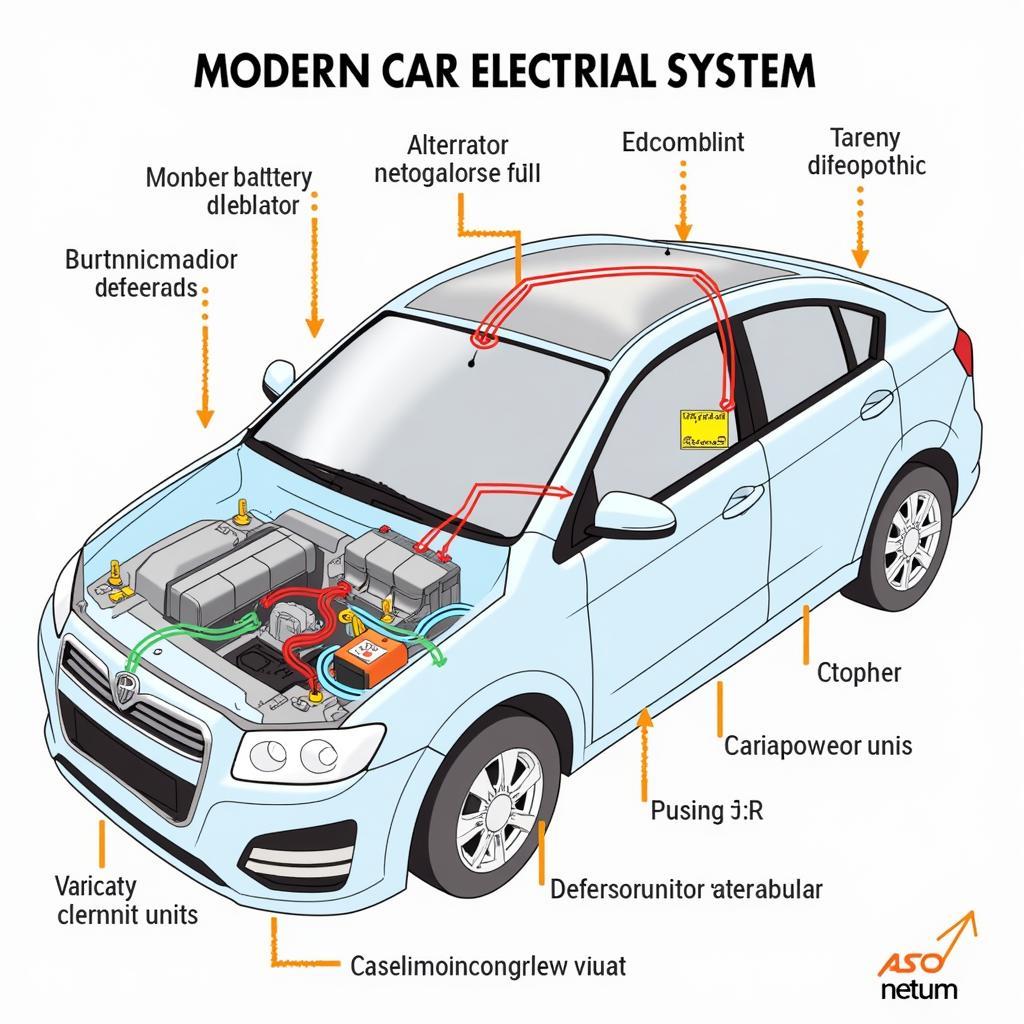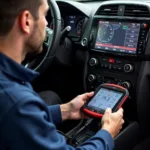Electrical faults are among the most common and frustrating problems encountered in modern vehicles. Understanding how to diagnose these issues is crucial for both car owners and professionals. This guide dives deep into the complexities of electrical fault in car diagnostics, providing you with the knowledge and resources to tackle these issues head-on.
Understanding the Basics of Electrical Fault in Car Diagnostics
Car diagnostics have evolved significantly, moving from simple code readers to sophisticated software and hardware systems. These diagnostic tools allow mechanics and car owners to pinpoint the source of electrical problems efficiently. An electrical fault can range from a minor glitch in the infotainment system to a critical failure in the engine control unit (ECU). The complexity of modern vehicle electronics demands a structured approach to diagnosis. After a few years, understanding how car diagnostics work becomes second nature for many mechanics. Have you ever considered how much easier car repair has become with advanced diagnostic tools? Now, you can get onsite car diagnostics.
Electrical systems are the backbone of modern vehicles, powering everything from the engine and transmission to the lights and entertainment systems. A malfunction in any part of this intricate network can lead to a cascade of issues. Identifying the root cause is the first step towards effective repair. One common misconception is that all electrical faults require expensive repairs. While some issues can be costly, many are simple fixes that can be addressed with basic knowledge and tools.
 Modern Car Electrical System Diagram
Modern Car Electrical System Diagram
Common Causes of Electrical Faults
Several factors can contribute to electrical faults in cars. These range from environmental factors like extreme temperatures and moisture to wear and tear on components. Here are some common culprits:
- Loose or corroded connections: Over time, vibrations and exposure to the elements can loosen connections and cause corrosion, disrupting the flow of electricity.
- Damaged wiring: Rodents, accidents, or even improper installation can damage wiring harnesses, leading to shorts or open circuits.
- Faulty sensors: Sensors play a vital role in providing information to the ECU. A malfunctioning sensor can send incorrect data, causing a variety of electrical problems.
- Battery problems: A weak or failing battery can cause a range of electrical issues, from dim headlights to difficulty starting the engine.
Diagnosing Electrical Faults: A Step-by-Step Approach
A systematic approach is essential for accurately diagnosing electrical faults. Here’s a step-by-step guide:
- Visual Inspection: Start by visually inspecting all wiring, connectors, and components for any signs of damage, corrosion, or loose connections.
- Check the Battery: Ensure the battery is properly charged and the terminals are clean and tight.
- Use a Diagnostic Scanner: A diagnostic scanner, like those offered by supreme car diagnostics, can retrieve trouble codes from the ECU, providing valuable clues about the nature of the fault.
- Consult Wiring Diagrams: Refer to the vehicle’s wiring diagrams to trace the circuits and identify potential problem areas.
- Test Components: Use a multimeter to test the voltage, resistance, and continuity of various components, such as sensors, relays, and fuses.
Advanced Diagnostic Techniques
While the above steps can help diagnose many electrical faults, some issues require more advanced techniques. These include:
- Oscilloscope Analysis: An oscilloscope can be used to analyze the waveform of electrical signals, providing detailed information about the operation of various components.
- Network Analysis: Modern cars rely on complex communication networks. Specialized tools can be used to analyze these networks and identify communication errors.
“Using the right diagnostic tool is like having a superpower. It allows you to see into the inner workings of the vehicle and understand exactly what’s going wrong.” – John Davies, Automotive Electrical Engineer.
Preventing Electrical Faults
Regular maintenance and proactive measures can help prevent electrical faults. Here are some tips:
- Keep the Battery Clean: Regularly clean the battery terminals and ensure they are tight.
- Inspect Wiring and Connectors: Periodically inspect wiring harnesses and connectors for signs of damage or corrosion.
- Protect Wiring from Damage: Secure any exposed wiring and use protective covers where necessary.
- Address Issues Promptly: Don’t ignore warning signs or minor electrical glitches. Addressing issues promptly can prevent them from escalating into major problems. You can try diagnostic auto reset bluetooth how to fix car n abs.
“Prevention is always better than cure. Regular checks and maintenance can save you a lot of headaches down the road.” – Sarah Miller, Certified Automotive Technician.
Conclusion
Electrical fault in car diagnostics can be challenging, but with the right knowledge and tools, they can be effectively diagnosed and repaired. By understanding the common causes, following a systematic diagnostic approach, and taking preventative measures, you can keep your vehicle’s electrical system running smoothly. Don’t hesitate to seek professional help if you encounter complex electrical issues. Remember, a properly functioning electrical system is vital for the safety and reliability of your car. You can also check out car diagnostics in specific locations like Bloemfontein or Lansdowne.
FAQ
- What are the most common signs of an electrical fault in a car?
- How can I check my car battery health?
- What is an OBD-II port and what is it used for?
- What are some common car diagnostic trouble codes?
- How often should I get my car’s electrical system checked?
- What is the difference between a short circuit and an open circuit?
- How can I prevent electrical faults in my car?
Common Scenarios
- Scenario 1: Car won’t start, and the headlights are dim. This often indicates a weak or failing battery.
- Scenario 2: The check engine light is on. This can be caused by a variety of electrical faults, and a diagnostic scanner is needed to determine the specific issue.
- Scenario 3: The car’s radio or infotainment system is malfunctioning. This could be due to a blown fuse, a loose connection, or a problem with the unit itself.
Further Exploration
Explore more about related car repair services and get expert advice on maintaining your vehicle’s electrical system.
Need Help?
For any car diagnostic assistance, contact us via WhatsApp: +1(641)206-8880, or Email: [email protected]. Our 24/7 customer support team is ready to assist you.


